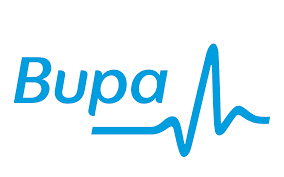By Daniel Stott (Registered Osteopath at Freedom Clinics Leeds)
The glenohumeral joint, more commonly known as the shoulder, is a joint that allows the largest range of movement possible within the body. Unfortunately this great flexibility comes at a consequence; the shoulder is notoriously unstable and relies a great deal on a collection of muscular and ligamentous structures to maintain stability. Shoulder injuries are becoming more prevalent, especially amongst those who attend a gym because of the excessive amount of stress that the shoulder is subjected to during weighted exercise.
It is important to protect your shoulders and reduce the risk of injury during exercise. Here are some invaluable tips to keep your shoulders healthy throughout your workout.
Use a foam roller.
Before beginning your workout take a couple of minutes to roll out your upper and mid back on a foam roller. The thoracic spine (mid back) is proven to contribute to the latter stages of shoulder elevation so any restrictions in the spine can cause issues within the shoulder joints.
Train in your full range.
The rotator cuff’s main role is to stabilise the shoulder and prevent the deltoid from crushing the bone (humerus) up into the shoulder socket. Carry out full ranges of shoulder movement during exercise, especially the first 30˚ of shoulder abduction to maintain a muscular balance. Serratus anterior is another muscle that helps to maintain shoulder stability and should be utilised fully during pushing exercises by opening the shoulder blades forwards.
Avoid shoulder blade restricting exercises.
Exercises where the scapula (shoulder blades) are flat against a bench will restrict the amount of movement possible; to regain this loss in range the shoulder compensates by stretching the capsule in all the wrong places, leaving it vulnerable to injury. Standing cable flies and presses are the ideal substitute for bench exercises but if this isn’t possible then a rolled up towel between the shoulder blades can take a small amount of stress off of the capsule.
Use dumbbells over bars.
Using a bar will under-utilise the stabilising muscles within the shoulder and discourage a natural range of motion. Switching to dumbbells may be more difficult but will train the smaller muscles of the rotator cuff as well as the bigger muscles such as the deltoids and pectorals.
Adopt a wider grip.
A narrow grip will require more extension through the shoulder for the weight to descend to the desired height and will take some of the bigger muscles off stretch that aid anterior stability. By switching to a wider grip the shoulder joint can stay in a neutral position during the eccentric phase of the lift which will reduce the risk of an anterior capsule injury.
Don’t skip back day.
Correct shoulder blade mobility is essential for healthy shoulder movements, specifically upward and downward rotation. Keeping the rhomboids strong will allow the scapulae to sit flat on-top of the ribcage and in a neutral position whilst the mid and lower trapezius are heavily involved in shoulder blade rotation.
Open your chest out.
The pecs and anterior compartment of the deltoid are popular muscles to train and are commonly tight, especially for those who sit hunched over a desk most of the day. If these muscles are too tight they will encourage scapula protraction and increase the thoracic curve, both of which inhibit correct scapula movement. Door stretch is a really simple and effective way of opening the chest out and preventing the shoulders from rounding.
Stretch your shoulder capsule.
The glenohumeral joint is a synovial joint and therefore it has a capsule which envelopes the bony structures. Unfortunately because of the large amount of movement possible at this joint the top of the arm bone (humeral head) has less stability and relies a great deal on the rotator cuff to keep it in the correct position. Commonly occurring muscular imbalances can cause the humeral head to sit slightly forward within the joint which stretches the anterior capsule and cause the posterior aspect to contract. The contracted capsule restricts any posterior translation of the humeral head which can lead to a variety of biomechanical impairments. Sleeper stretch is a complicated but useful technique to stretch the posterior capsule.
Summary
Stretch the pecs, anterior deltoid and posterior capsule.
Strengthen the rotator cuff, rhomboids, serratus anterior and mid/lower traps.
Mobilize the thoracic spine.
Avoid bars, benches and narrow grips.
If you are experiencing shoulder pain you can book your free consultation online today to talk to one of our experienced practitioners one to one about how we can help you to restore full function to your shoulder. Alternatively call Freedom Clinics Leeds on 0113 345 5060 for further advice from one of our specialists.








